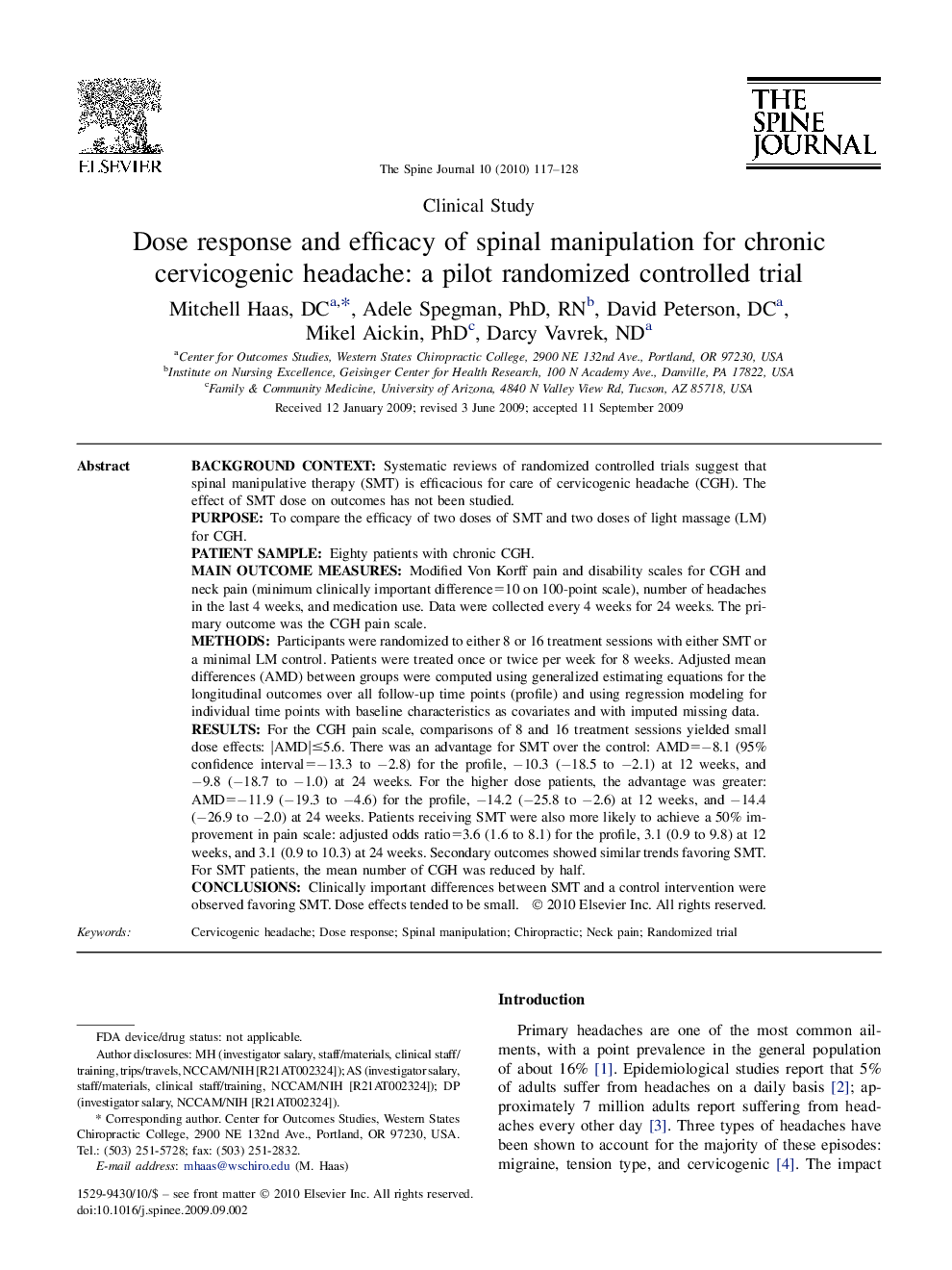| کد مقاله | کد نشریه | سال انتشار | مقاله انگلیسی | نسخه تمام متن |
|---|---|---|---|---|
| 4098772 | 1268624 | 2010 | 12 صفحه PDF | دانلود رایگان |

Background contextSystematic reviews of randomized controlled trials suggest that spinal manipulative therapy (SMT) is efficacious for care of cervicogenic headache (CGH). The effect of SMT dose on outcomes has not been studied.PurposeTo compare the efficacy of two doses of SMT and two doses of light massage (LM) for CGH.Patient sampleEighty patients with chronic CGH.Main outcome measuresModified Von Korff pain and disability scales for CGH and neck pain (minimum clinically important difference=10 on 100-point scale), number of headaches in the last 4 weeks, and medication use. Data were collected every 4 weeks for 24 weeks. The primary outcome was the CGH pain scale.MethodsParticipants were randomized to either 8 or 16 treatment sessions with either SMT or a minimal LM control. Patients were treated once or twice per week for 8 weeks. Adjusted mean differences (AMD) between groups were computed using generalized estimating equations for the longitudinal outcomes over all follow-up time points (profile) and using regression modeling for individual time points with baseline characteristics as covariates and with imputed missing data.ResultsFor the CGH pain scale, comparisons of 8 and 16 treatment sessions yielded small dose effects: |AMD|≤5.6. There was an advantage for SMT over the control: AMD=−8.1 (95% confidence interval=−13.3 to −2.8) for the profile, −10.3 (−18.5 to −2.1) at 12 weeks, and −9.8 (−18.7 to −1.0) at 24 weeks. For the higher dose patients, the advantage was greater: AMD=−11.9 (−19.3 to −4.6) for the profile, −14.2 (−25.8 to −2.6) at 12 weeks, and −14.4 (−26.9 to −2.0) at 24 weeks. Patients receiving SMT were also more likely to achieve a 50% improvement in pain scale: adjusted odds ratio=3.6 (1.6 to 8.1) for the profile, 3.1 (0.9 to 9.8) at 12 weeks, and 3.1 (0.9 to 10.3) at 24 weeks. Secondary outcomes showed similar trends favoring SMT. For SMT patients, the mean number of CGH was reduced by half.ConclusionsClinically important differences between SMT and a control intervention were observed favoring SMT. Dose effects tended to be small.
Journal: The Spine Journal - Volume 10, Issue 2, February 2010, Pages 117–128